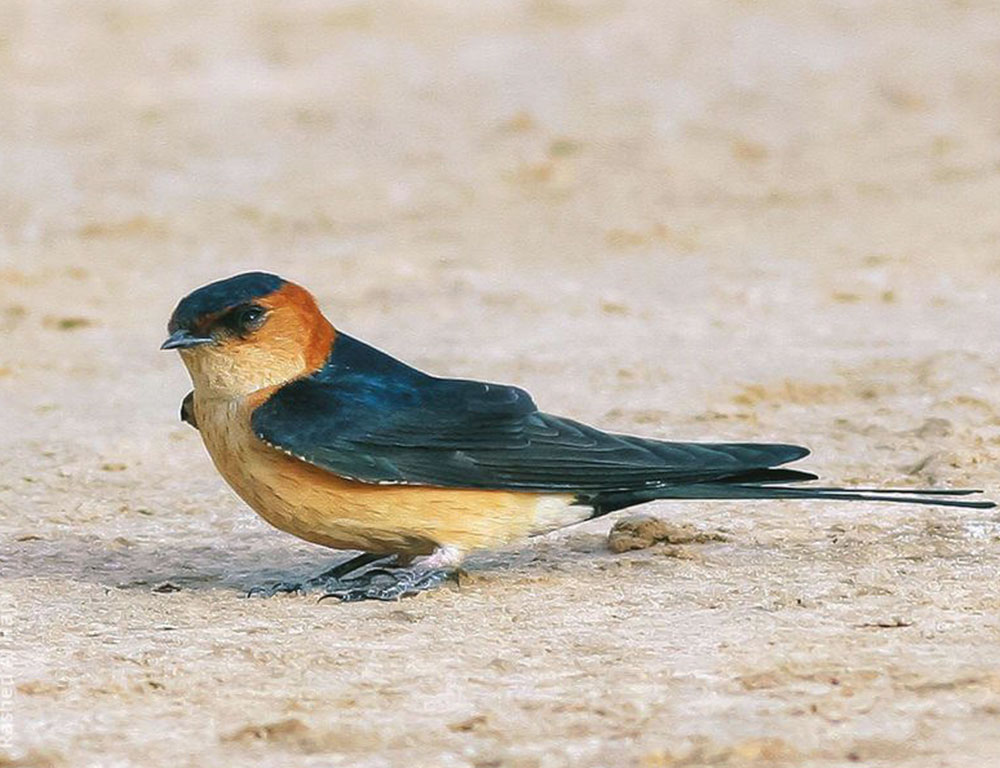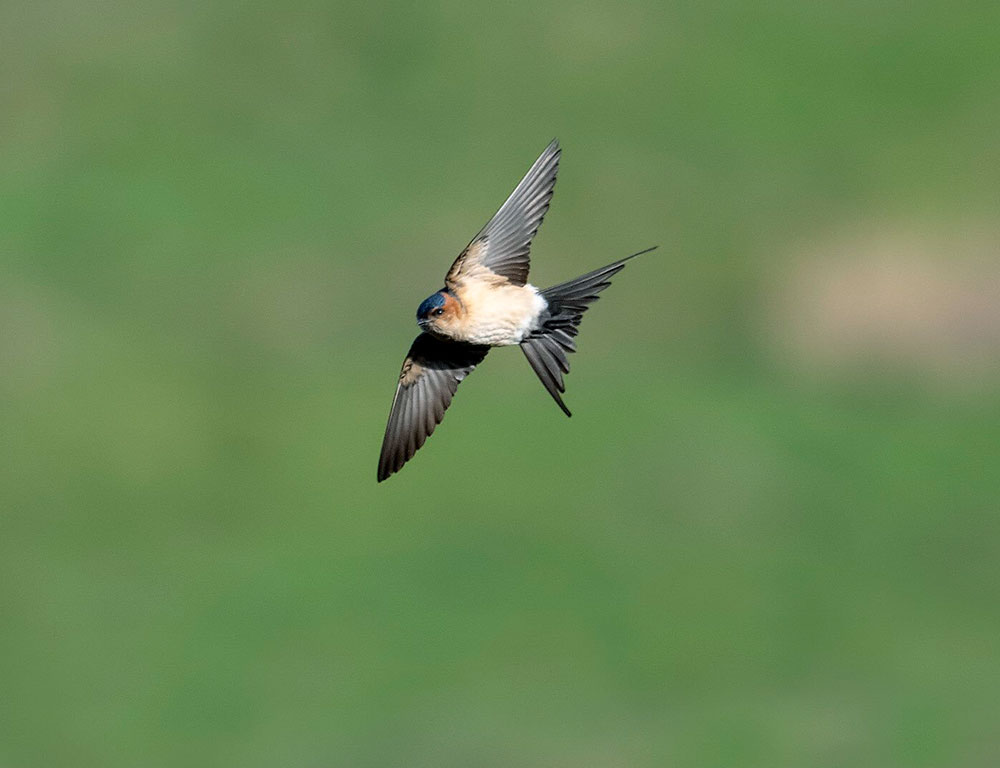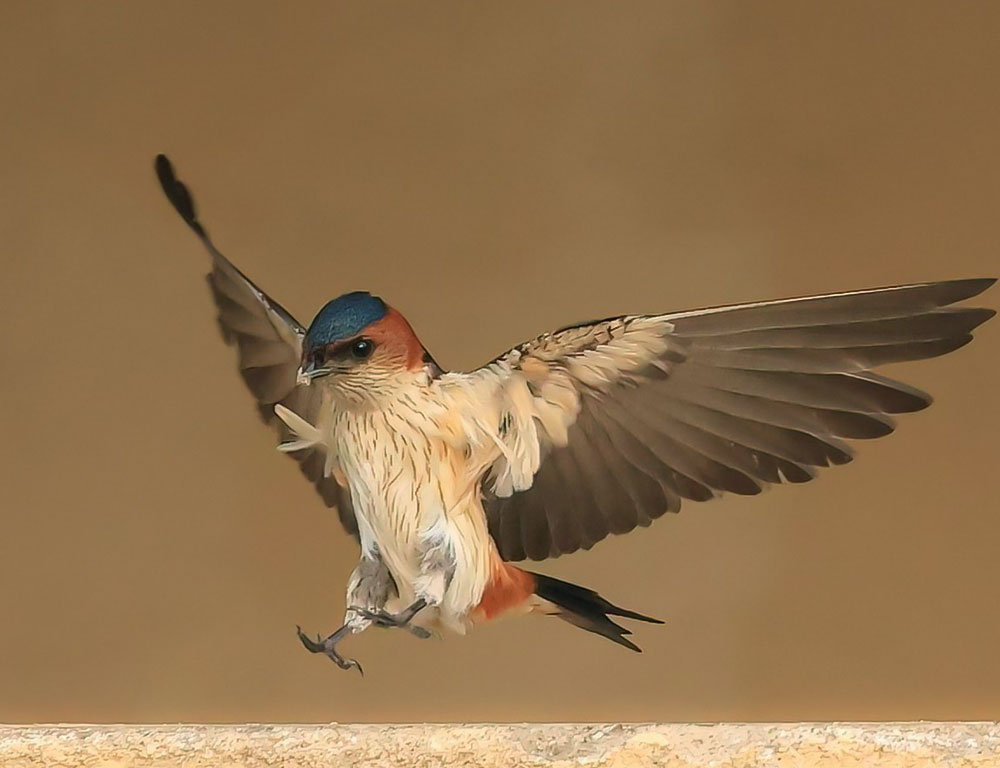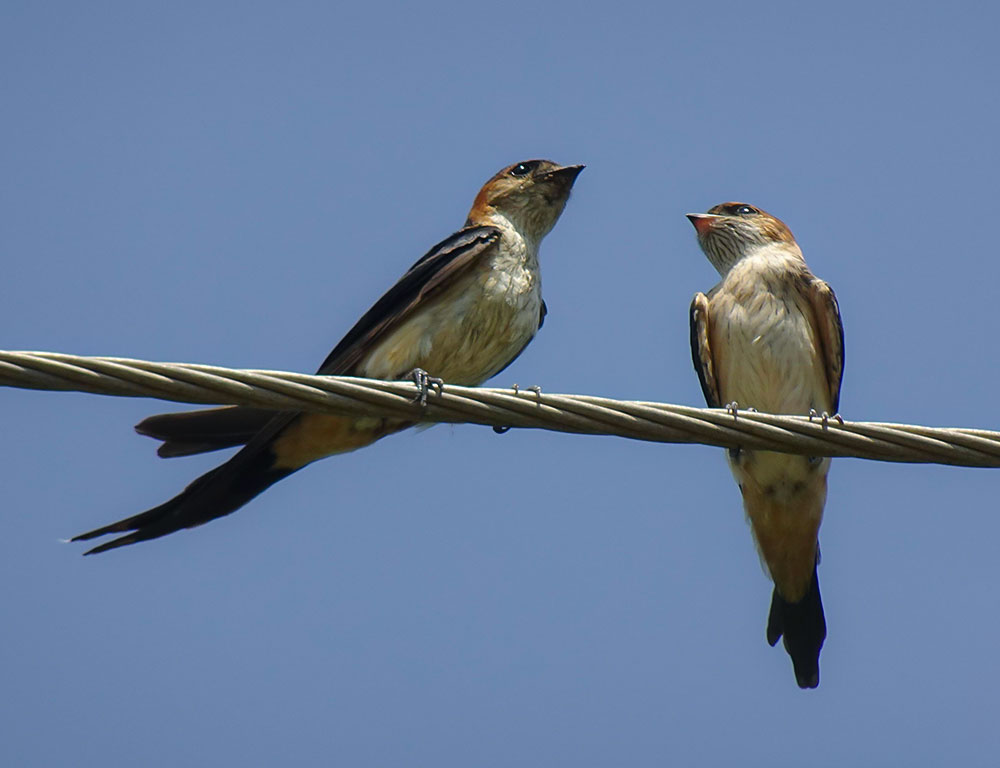In the world of ornithology, a species often steals the spotlight with its stunning appearance and intriguing behavior – the Red-Rumped Swallow.
This bird, known scientifically as Cecropis daurica, is a delight to birdwatchers across the globe due to its distinctive plumage and agile flight patterns.
Hailing from the family Hirundinidae, Red-Rumped Swallows are known for their widespread habitat range across Europe and Asia.
They’re fascinating creatures not just because of their striking colors but also because they have some unique habits that set them apart from other swallows. For instance, they construct intricate mud nests unlike any other in the avian kingdom.
Famed for their vibrant red rumps (hence their name), these birds are remarkable flyers, too. They have a knack for swooping through the air at high speeds while maintaining impeccable precision, making them an absolute spectacle in nature landscapes.
Physical Characteristics of the Red-Rumped Swallow

The Red-Rumped Swallow (Cecropis daurica) is a visually captivating bird known for its distinct physical features, which set it apart from other members of the swallow family.
Let’s delve into its remarkable physical characteristics:
Size
Red-rumped swallows typically measure between 17 and 19 centimeters in length, making them slightly larger than their close relative, the Barn Swallow.
Coloration
These birds exhibit a striking contrast in coloration. Their upperparts are predominantly dark blue, while their underparts display a warm cinnamon hue. The red rump, a hallmark feature, contrasts vividly against the rest of their plumage.
Additionally, their underparts are adorned with streaks of black and grey, adding to their distinctive appearance. The wings showcase a blend of brown and black hues, enhancing their overall elegance.
Tail
One of the most notable features of the Red-Rumped Swallow is its long and deeply forked tail. This tail shape and white spots on the inner web make for a striking visual display during flight.
The tail’s unique structure aids in maneuverability and enhances the bird’s graceful aerial movements.
Bill
Red-rumped swallows possess thin, pointed bills perfectly adapted for their insectivorous diet. These bills enable them to catch insects mid-flight with precision and efficiency, showcasing their adept hunting skills.
Sexual Dimorphism
Males and females of this species exhibit subtle morphological differences, with males typically having longer tail feathers than females. While this distinction may require a keen eye to discern, it adds an exciting aspect to their physical characteristics.
Vision and Agility
Equipped with excellent vision, Red-Rumped Swallows are adept hunters capable of tracking and capturing tiny insects even while flying at high speeds. Their superior sight and remarkable agility make them unparalleled hunters in the avian world.
Habitat and Distribution of the Red-Rumped Swallow

The Red-Rumped Swallow is a highly adaptable bird with a widespread habitat and distribution:
Habitat
They are primarily found in open country areas near cliffs or mountains, where they can build their nests. However, they also frequent human habitations and natural cliff faces for nesting. Their unique mud-pellet nests are often constructed under eaves or on cave walls.
Geographical Distribution
These swallows are found across Europe, Asia, and Africa, showcasing a remarkable global distribution. They are particularly abundant during the breeding season, typically from March to June in Europe and April to July in Asia.
They can be observed from southern Europe to Japan during this time.
Breeding Season
The breeding season varies slightly across their range. In Europe, it typically spans from March to June, while in Asia, it extends from April to July. In Africa, they breed year-round.
Migration
During winter migration, Red-Rumped Swallows migrate southwards towards warmer climates in Africa and southern Asia. This seasonal movement ensures they can access abundant insect food sources throughout the year.
Adaptability
Despite their small size, Red-Rumped Swallows have been observed flying over open seas, demonstrating their adaptability in selecting suitable habitats for living and breeding.
Behavior and Diet of the Red-Rumped Swallow

Diving headfirst into the behavior of the Red-Rumped Swallow, it’s fascinating to note how The behavior and diet of the Red-Rumped Swallow reveal fascinating insights into the lifestyle and ecological significance of these birds:
Social Behavior
Red-Rumped Swallows are highly sociable birds, often forming large roosts in nesting sites such as caves, tunnels, or man-made structures like buildings. During the day, they are active and display impressive acrobatic skills while hunting for insects mid-air.
Nest Building
These swallows exhibit exceptional nest-building abilities, constructing intricate nests using mud pellets collected in their beaks. The nests typically feature a tubular entrance leading to a nesting chamber, providing safety from predators and harsh weather conditions.
They are often found under cliff overhangs or ledges on buildings.
Diet
The primary diet of Red-Rumped Swallows consists of small flying insects, and they employ an aerial feeding method to catch prey during fast-paced swooping flights. Their diet includes a variety of insects, such as flies, beetles, wasps, moths, and ants.
During the breeding season, they tend to consume more mosquitoes and flies, which are abundant food sources.
Ecological Role
Red-rumped swallows benefit the ecosystem by preying on harmful insects like mosquitoes and sure flies.
Controlling pest populations around human habitats contributes to maintaining ecological balance and reducing the nuisance caused by these pests.
Conservation Status of the Red-Rumped Swallow

Despite being classified as ‘Least Concern’ by the IUCN Red List, the conservation status of the Red-Rumped Swallow is not without its concerns. While they may not currently face imminent danger of extinction, several threats loom over their populations:
Habitat Loss
Human activities such as agriculture and deforestation threaten the Red-Rumped Swallow’s natural habitat. Loss of suitable nesting sites and foraging grounds can severely impact their population dynamics.
Decreasing Population Trend
Despite their ‘Least Concern’ status, there has been a noticeable downward trend in the global population of Red-Rumped Swallows over recent years. While current numbers may not be critically low, this decline is cause for concern and warrants attention.
Climate Change
The impacts of climate change, including rising temperatures and fluctuating weather patterns, can disrupt the breeding cycles and food availability of Red-Rumped Swallows.
These environmental changes can negatively affect their reproductive success and overall population health.
Below is a quick look at their estimated global population:
| Year | Estimated Population |
|---|---|
| 2004 | 20-49 million |
| 2012 | 10-19 million |
| 2020 | Less than 10 million |
Conclusion
Let’s wrap up our exploration of the Red-Rumped Swallow. This bird species has left a lasting impression on me with its distinctive red rump and agile flight patterns. They’re not just another feathered creature in the sky but an essential part of our ecosystem.
I’ve shared insights about their breeding habits, migration patterns, and diet. We’ve also delved into how they build their nests – a remarkable engineering feat that’s fascinating to observe. Their ability to adapt to different habitats shouldn’t be overlooked either.
We can glean so much from these birds: resilience, beauty in simplicity, and an intrinsic connection with nature. Observing them can provide us with learnings we could apply in our own lives, such as the importance of adaptability and resourcefulness.
Don’t forget about their role in pest control, too! By devouring insects mid-flight, they help keep insect populations under control, which in turn benefits agriculture and human health.
Here are some key takeaways:
- The Red-Rumped Swallow is a migratory bird mainly across Asia and Europe.
- These birds nest on cliff faces or man-made structures using mud pellets.
- A diet primarily consisting of flying insects makes them excellent at pest control.
- Their striking appearance includes a shiny blue-black plumage contrasted by a bright red rump.
In closing out this article, I hope you have gained an appreciation for the humble Red-Rumped Swallow. Birds like these remind us of the incredible diversity present within nature – each species playing its unique role within our shared world.
As we move forward, let’s strive to protect these avian wonders for future generations to enjoy as well.